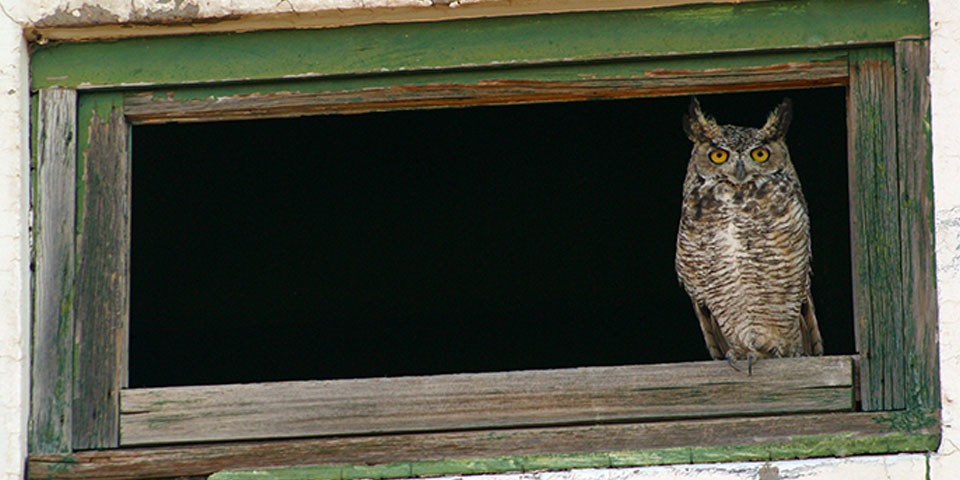
D. Burkett Photo
It's getting dark at White Sands, so look to the night sky and you may see a powerful predator flying high and wide. It's the great horned owl! The largest owl found in New Mexico, this usually nocturnal bird of prey can be up to 25 inches (63.5 cm) long and weigh 3 pounds (1.4 kg). Its prominent ear tufts, white bib, and geographic color and size variations distinguish it from other owl species. Meanwhile, its 44 inch (112 cm) wingspan, large yellow eyes with exceptional low light vision, excellent hearing, and talons with a crushing power of 300 pounds per square inch (PSI) (136 kg) make it a superb hunter. A typical strong athlete only has the crushing power of 65-76 lbs PSI.
What are great horned owls hunting? These owls have a very broad prey base. Typically "perch-and-wait" predators, they hunt a variety of mammals, birds, reptiles, and fish, although they will not eat carrion. Here at White Sands, great horned owls may feed on rodents, skunks or even kit foxes that make their homes in the dunefield! Other than White Sands, great horned owls are found in numerous locations both around the state of New Mexico and around the world. They can be found in both canyon lands and flat country and in nearly all vegetation types. Nesting areas range from forests to cities to mountains and sometimes even on the ground! The owls may build their nests in trees, in yuccas, in caves, and on cliff walls. Some pairs are tolerant of human presence and may even nest in buildings and parking lots. So keep a sharp eye out for these raptors!
At some times during the year, great horned owl nests are not just home to adult birds, but also to eggs and babies. The breeding season begins in autumn with courting done during twilight. The typically two-egg clutch is then produced as early as February, making great horned owls one of the earliest nesters among the birds found at White Sands. The eggs are incubated and tended to by the larger female while the male hunts and delivers prey to the nest. After hatching, fledglings can make short flights at seven weeks. Adult owl pairs have a tendency to return to the same nesting area, often moving into an empty nest that another bird has made.
Not only might you spy these owls flying overhead at night or nesting in various trees, yuccas, caves, etc., but you also might hear great horned owls! Their "song" is a series of deep, soft hoots, though the number of hoots in a series vary. In New Mexico, the most typical is a "hoo-hoo-hooo –hoo-hoo" call, or a variation of it, thus earning them the nickname "hoot owls." Aside from hooting, great horned owls can also produce screams, screeches, barking notes, chuckles, squawks and even loud growls. Juveniles can also make a loud, raspy begging call. So, as you visit White Sands, keep both your eyes and ears open for signs of these nocturnal predators!
|
Last updated: August 23, 2016
